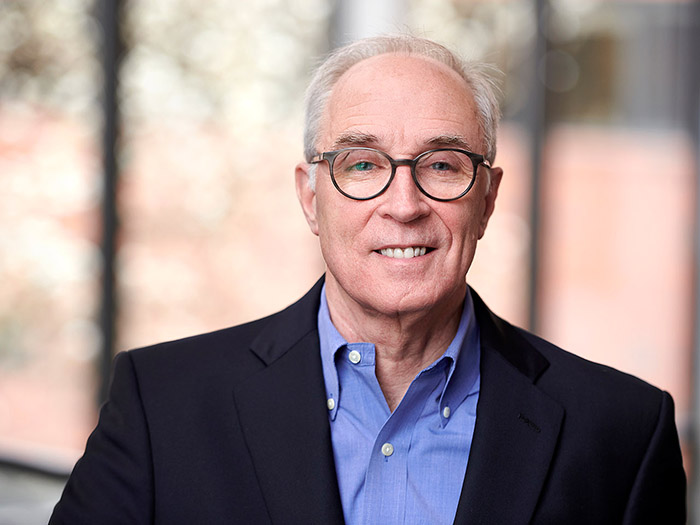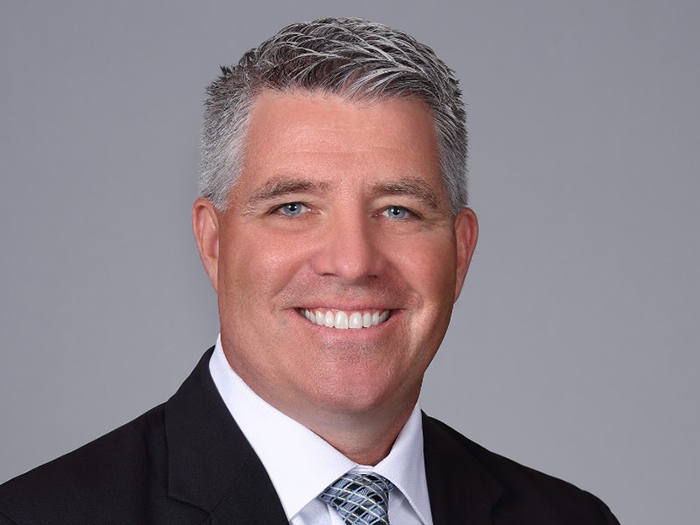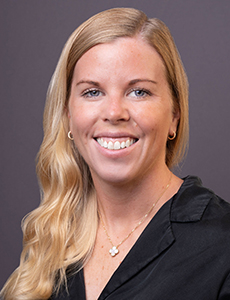13 Questions for Demex Group CEO Bill Clark

In late July, Dan Reynolds, the editor-in-chief of Risk & Insurance, caught up with Bill Clark, the CEO of the Demex Group. What follows is a transcript of that discussion, edited for length and clarity.
Risk & Insurance: Nice to meet you, Bill. What is Demex’s business model, and where do you fit into the insurance ecosystem?
Bill Clark: Demex operates as a calculation agent within the reinsurance industry, positioned between reinsurance providers and insurance companies who purchase reinsurance, working with reinsurance brokers who are looking for solutions for their clients. Our proprietary modeling capabilities enable a new type of reinsurance to come to market, specifically parametric reinsurance policies.
While parametric insurance products are common, parametric reinsurance products are not. Our model serves as the basis for both underwriting and settling these policies, providing transparency to buyers and sellers alike.
The insurance industry’s biggest weather-related problem is no longer catastrophes like earthquakes and hurricanes, but rather the increased frequency of more regular weather events due to climate change. Since the 1980s, the frequency of events like tornadoes, hailstorms, thunderstorms, windstorms and derechos has risen over 500%.
Insurance companies struggle to keep up with the resulting claims, and traditional reinsurance providers, focused on catastrophe cover, do not offer adequate protection against these perils. This gap is where we come in, focusing exclusively on these secondary perils, with severe convective storm the most significant.
The lack of reinsurance for these perils poses an existential threat to the insurance industry. More companies are being downgraded by AM Best or going out of business due to depleted earnings and surpluses from paying claims. Our role is to provide the necessary reinsurance to insurance companies, backstopping them against these losses.
R&I: What size carriers are you working with?
BC: Initially, we thought the primary buyers would be regional and mutual players operating in one to three states in the middle of the United States. And that has proven to be a large and motivated market. However, after having the product in the market for just over a year, we’ve found that national carriers are equally interested because they have the same exposures in certain parts of their portfolio.
There are certain areas of the United States that are not heavily prone to severe convective storms, so regional insurers in those states may not need this product. But out of the over 3,500 P&C insurance carriers in the United States, at least 1,000 require this, including the national carriers.
Although we hadn’t initially considered national carriers as a primary target, we’re finding that they’re approaching us through reinsurance brokers, just like the mutuals and regionals are.
R&I: How does the Demex Group approach the growing problem of climate risk in the insurance industry, and how does this present an opportunity for your business?
BC: For a business like ours, the growing problem of climate risk presents an opportunity, and one that fits extremely well with our expertise and capabilities. The insurance industry is desperate for solutions.
Historically, there were two primary ways to handle this risk: One, insurance companies would self-insure by retaining all the secondary perils risk, but the size of these retentions has gotten way too big for them to handle; or two, reinsurance providers would offer aggregate or excess of loss products, but they lost billions of dollars doing that and have pulled out of this market. The reason they weren’t able to succeed is that they were using models designed for catastrophes, which occur once every 250 or 500 years.
The climate risks we’re talking about are much more frequent, occurring once every five or 10 years. It’s not surprising that models designed for events happening once every 100 to 500 years are not going to be optimal for events occurring every five years.
R&I: What has been the appetite or interest from reinsurers in your parametric reinsurance offering, and how has that progressed?
BC: It’s interesting, and I’ll speak freely here. When we were going down this path, many people within the industry told us that we were onto something in terms of identifying a major industry protection gap. They said there’s a huge need in the market and lots of people want this kind of cover, including insurance brokers who are actively looking for it.
However, they also warned us that our problem would be getting capacity from reinsurers, because they’ve lost so much money trying to do this in the past. Many of them have a knee-jerk reaction to not even consider it.
What we found was that reinsurance providers are not afraid of taking risk — in fact, that’s their whole business. They are happy to take calculated risks that they can make money on, but conversely, they’re not interested in taking risks that they lose money on.
Now that we’ve shown them with great transparency how this parametric reinsurance offering works — where they can make money while still charging a price that the insurance company can afford — they love it. However, it’s not an instant process. We have to work with these folks, let them vet our model and approach, and really understand it. But the ones that are providing us capacity are thrilled and are out there doing it.
R&I: The property reinsurance market has been in a difficult situation for a while now. Can you provide more context on the current state of the market and its implications?
BC: The property reinsurance market has indeed been in a tough spot for a considerable time. Last year was particularly bad relative to historical trends, and this year is shaping up to be even worse.
The industry is in a state of borderline panic, the consensus being that something has to change. The current situation is unsustainable and could potentially wipe out significant portions of the insurance industry, which would be highly problematic for homeowners, businesses and everyone who relies on insurance.
Insurance companies must remain in business for the system to function properly. While we may not be able to solve every problem for everyone, this is a significant issue that demands attention. That’s precisely why we have introduced this product to the market and are focusing our efforts on addressing this challenge.
R&I: What has been your biggest challenge in terms of gaining traction and having the conversations you want to have as you roll out and grow your business?
BC: Our biggest challenge has been market awareness. We only brought this product to market in 2023, after developing and testing it since 2022, working with reinsurance brokers and capacity providers.
The interest in having a solution to this problem is at an all-time high, and people are desperately looking for solutions. However, as a new player, we’re not that well-known. But now that our product has transacted, that is changing.
R&I: What role does marketing and awareness play in your company’s growth strategy, and how are you approaching it?
BC: In the past, we were so focused on developing our solution, working with brokers and acquiring initial customers that marketing and awareness weren’t a priority. However, as we shift our focus to scaling, the first step is to make people aware of our offering.
This is already happening organically because major reinsurance brokers are offering our product. We’re pleased with what’s been accomplished solely via word of mouth. We recognize that investing time and effort into marketing and awareness is crucial for our growth strategy moving forward.
R&I: How did the insurance industry get to this point where there is significant withdrawal and challenging combined ratios due to losses?
BC: The traditional mechanism for insurance companies was to turn to their capacity providers, their reinsurance providers, for CAT cover. Historically, reinsurers would either include cover for severe convective storms for free to secure the CAT business or add a nominal upcharge for it.
However, the reinsurers discovered that they were losing a significant amount of money doing that, leading to their withdrawal from the market. This has resulted in a “perfect storm” situation where the problem is at its greatest while the solutions are at their lowest.
R&I: What factors led to the current state of the reinsurance market for severe convective storms, and how are reinsurance providers responding?
BC: The current state of the reinsurance market for severe convective storms is a result of the increasing frequency of these events, which has made it nonviable for reinsurance providers to offer coverage in the forms they previously did, such as aggregate, excess of loss, or lowering the attachment point of the catastrophe tower.
Reinsurance providers have responded by maintaining their position higher up the catastrophe tower. They have found a way to conduct catastrophe business profitably at that level and are content with that current approach.
Research indicates that reinsurance providers are unlikely to move down the tower by offering traditional products anytime soon, as they have established a successful business model in the catastrophe market.
R&I: What is the most important thing for our readers to understand about the insurance industry’s adoption of parametric reinsurance products?
BC: The insurance companies, who are the ultimate buyers of this product, need to get comfortable with this new concept. They purchase it from the reinsurer via their reinsurance brokers, with us as the facilitator. Ideally, they would prefer an indemnity product that resembles their catastrophe cover but with a lower attachment point.
However, this is not feasible for the catastrophe provider to offer profitably. Instead, insurers are being encouraged to embrace the innovative idea of a parametric reinsurance product based on modeled losses. This concept is particularly new for regional and mutual providers, who have historically followed a set buying pattern and risk retention strategy.
The industry is now asking them to address a significant problem with a solution that is somewhat unfamiliar to them, necessitating an educational process. As with any industry comprising thousands of companies, there will be early adopters, like our initial customers who are purchasing and utilizing this product as a risk transfer mechanism.
R&I: What is the estimated size of the market in terms of dollars, and how many companies have you identified as potential clients?
BC: Our estimates suggest that the market is over $2 billion per year in cover. Some of our reinsurance provider partners have estimated it to be up to $15 billion in limit due to the magnitude of the problem on a global basis.
However, it’s important to note that this figure represents capacity, which is what the reinsurer is going to write. To determine the actual premium, calculation agent fee and broker fee, you need to scale down that number. Nonetheless, the high-level figure is in the billions of dollars.
We have identified more than 1,000 carriers as potential clients just in the United States, and a similar number spread throughout the rest of the world.
R&I: Have you considered working with captives as another viable option, in addition to regional, mutual and some of the national carriers in certain pockets?
BC: Yes, we have. In fact, we recently had an outreach from a large company in the United States that manages tens of thousands of apartment complexes nationwide. They have a captive specifically for this purpose.
They reached out to us asking if we work with captives, as they believe our product could potentially address the problem they have. Although we haven’t worked with captives before, there’s no reason we can’t, as it’s essentially the same concept.
Their captive goes out and buys CAT cover, so it can also buy SCS protection. They found this interesting, and while they need to come up to speed on our product since they’ve never heard of something like it before, they like what they’ve heard about what it does. So, to answer your question, yes, captives are also part of that mix.
R&I: What differentiates the Demex model from other models in terms of the data used and the resulting accuracy?
BC: The Demex model utilizes firsthand claims data directly from each insurance carrier in the area they’re looking to insure. This data spans a 10-year period and includes the actual claims from the specific book of business of that insurance carrier, rather than generic or aggregated data from other sources.
By overlaying the weather conditions present when those claims occurred, the Demex team can project modeled losses with a high degree of accuracy. This approach provides a level of robustness that other models lack.
At Demex, we work directly with each individual insurance company, using their specific claims data, which is not available on the market and cannot be purchased. Our unique position as a trusted third-party calculation agent allows us to access this data without risk of abusing it. &










